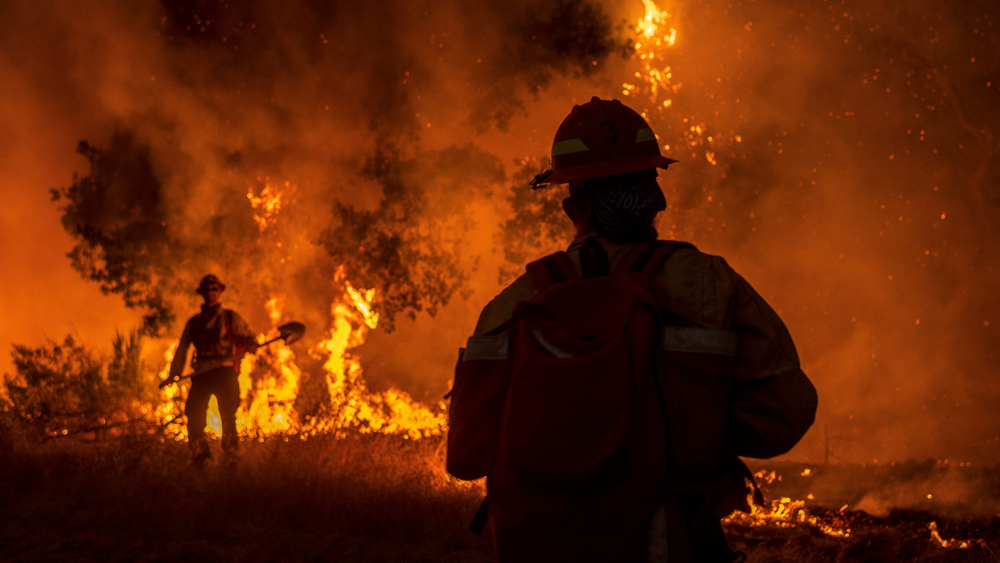NIST releases new emergency response guidance for wildfires
- August 24, 2023
- 10:45 am


Iain Hoey
Share this content
The National Institute of Standards and Technology (NIST) has published two reports, offering advice to enhance wildfire readiness in the United States.
These reports propose measures for communities when there’s insufficient time for a full evacuation of residents.
Moreover, NIST has launched a new platform providing advice on making structures and communities more resistant to fires.
Learning from past wildfires
The guidance stems from a comprehensive study of the 2018 Camp Fire in California.
This fire tragically claimed the lives of 85 individuals.
Years of research were poured into this project by specialists from NIST and various other state and federal agencies.
NIST fire protection engineer Alex Maranghides stated: “The goal of these reports is to apply lessons learned from the Camp Fire to make our communities safer from ongoing wildfire risks.”
In-depth look at the Camp Fire
On November 8, 2018, the Camp Fire ignited in Butte County, Northern California.
Rapidly spreading, it affected several communities and resulted in over 40,000 people trying to flee.
Despite previous planning for such events, the fast spread resulted in major traffic and hundreds were caught in a burnover, a perilous situation where the fire moves through their location.
Maranghides commented: “The Camp Fire demonstrated the potential outcome even in a community that’s prepared when there’s not ample time to evacuate.”
Following the calamity, data was gathered by NIST in collaboration with the California Department of Forestry and Fire Protection (CAL FIRE) and other agencies to understand the disaster more thoroughly.
Steven Hawks of CAL FIRE observed: “Evacuations are paramount and the significance of seconds cannot be undermined when wildfires pose a threat. Early notification is vital for survival.”
Their detailed study, A Case Study of the Camp Fire: Notification, Evacuation, Traffic, and Temporary Refuge Areas, combines over 2,600 observations with the timeline of the Camp Fire’s spread, examining the response of the first responders.
Eric Link, a NIST researcher, noted: “The collective endeavour among first responders was monumental in saving thousands. Their actions were particularly highlighted by the documentation of 198 specific rescue events.”
The ESCAPE report: another perspective on emergency response
Another outcome of the Camp Fire lessons is the ESCAPE report, aiming to guide communities during wildfires by offering general response advice.
This report emphasises that evacuation might not always be feasible.
Under tight constraints, Maranghides suggests that individuals might need to seek refuge within their community in pre-established safety zones.
The ESCAPE report recommends officials understand their community’s response capabilities better.
Having prior knowledge about evacuation times will assist officials in making more informed decisions during crises.
Furthermore, planning for the safe evacuation of crucial care facilities and people with mobility challenges is a necessity.
Nicole LaRosa, senior policy adviser to the U.S fire administrator, remarked: “State and local fire service leaders and emergency managers need evidence-based guidance for making informed decisions that can be lifesaving.”
Introducing the Hazard Mitigation Methodology website
In addition to the reports, NIST has introduced a new website designed to assist leaders in areas vulnerable to wildfires.
This website offers a unique perspective, proposing a community-centric approach rather than focussing only on individual structures.
Maranghides concludes by recognising the significant impact of these resources, stating that smaller communities, previously lacking such tools, now have a clearer path to prepare for wildfires.
IFSJ Comment
The release of the new guidance and resources by NIST represents a crucial step in the ongoing effort to enhance community resilience to wildfires.
Drawing from the tragic events of the Camp Fire in 2018, these reports and the new website offer tangible, evidence-based tools for communities of all sizes.
As wildfire events become increasingly prevalent, tools such as these are invaluable in equipping communities with strategies not just for prevention, but also for effective response and mitigation.
The collaboration between NIST, CAL FIRE and other agencies underscores the importance of a cohesive and well-researched approach to wildfire preparedness.
About NIST
The National Institute of Standards and Technology (NIST) is an agency within the United States Department of Commerce.
Founded in 1901, NIST’s mission is to promote innovation and industrial competitiveness by advancing measurement science, standards, and technology in ways that enhance economic security and improve our quality of life.

